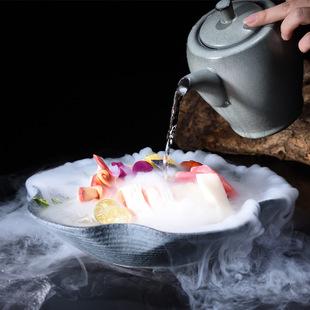Basic properties of dry ice products
Dry ice is a solid form of CO2, which normally is a colorless, odorless gas and naturally exists in the air. Although the content of CO2 in the air is relatively small (about 0.03% by volume), it is one of the most important gases known to us.
Dry ice is highly volatile, sublimating into non-toxic, odorless carbon dioxide, a gas 1,000 times larger than a solid, so it can't be stored in a small container with a good seal and is prone to exploding. It is safe to keep dry ice in a well-ventilated area to release the vapors that evaporate from the ice.
Dry ice products
Basic introduction
Dry ice is a solid form of carbon dioxide. At normal pressure, carbon dioxide freezes at minus 78.5 degrees Celsius, which is useful for keeping things frozen or cold. It is colorless, tasteless, non-flammable and slightly acidic. The density of dry ice varies, but is usually about 1.4 to 1.6 g/cm3.
Dry ice rapidly freezes and cools objects and can be configured with isolation gloves. Dry ice is now widely used in many levels. When dry ice is heated, it directly sublimates from a solid state to a gas, which is directly converted to a gas without the process of turning into a liquid. Therefore, it is called "dry ice" because its phase transition does not produce liquid. To turn carbon dioxide into a liquid, you have to increase the pressure to 5.1 atmospheres for liquid carbon dioxide to appear.





 Facebook
Facebook YouTube
YouTube LinkedIn
LinkedIn Twitter
Twitter